- HOBBIES
Eternal Return Tier List

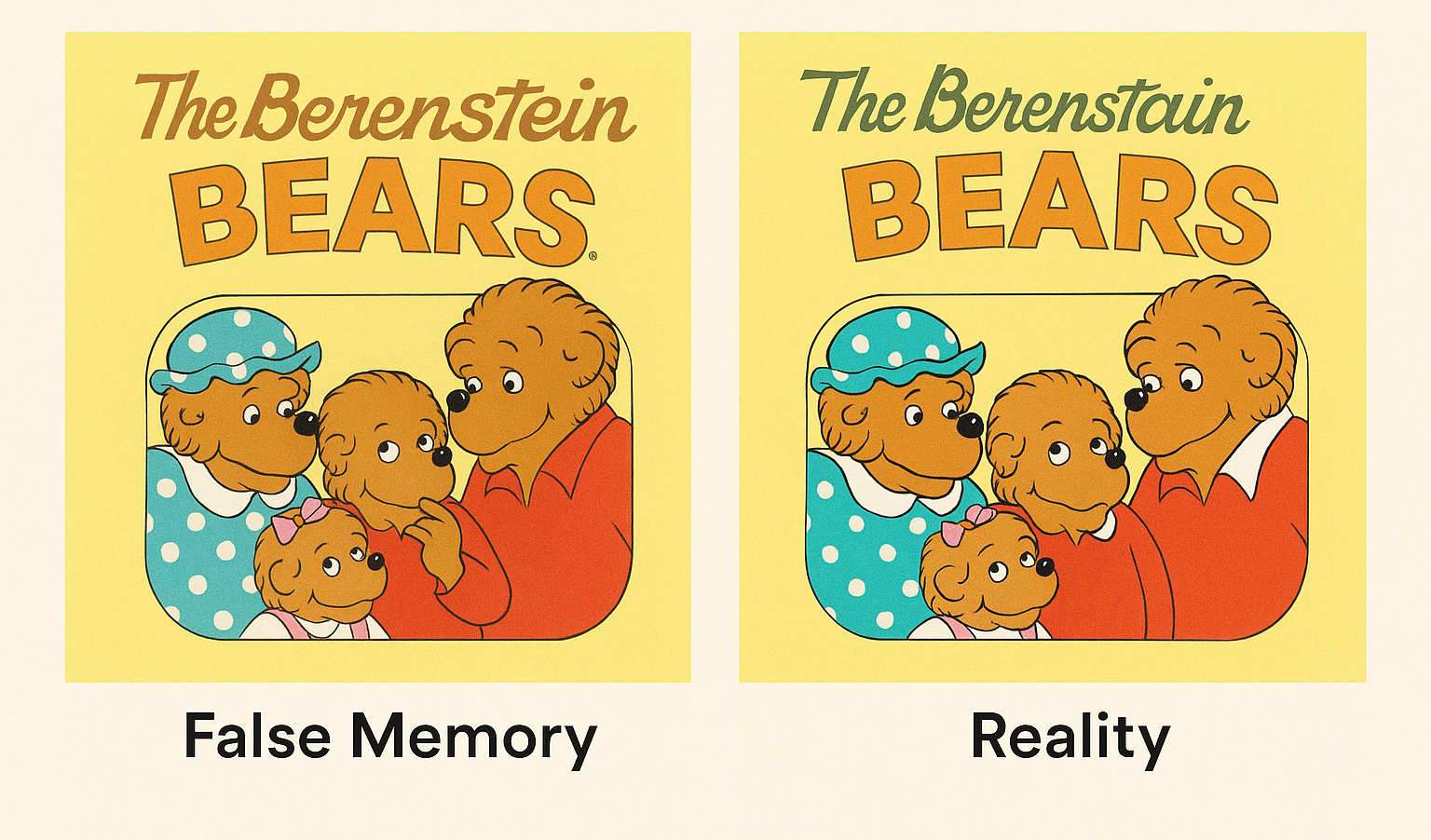
Have you ever been certain of a fact only to discover you were wrong all along? You’re not alone. Welcome to the Mandela Effect: a mind-bending phenomenon where large groups of people remember events, names, or details differently from how they actually happened. Named after Nelson Mandela, many believed he died in prison in the 1980s, even though he lived until 2013. These collective false memories have sparked debate, fascination, and even conspiracy theories about alternate timelines, parallel universes, and glitches in the matrix.
Whether you’re into psychology, pop culture, or simply love a good mystery, these 50 Mandela Effect examples will blow your mind and have you questioning the nature of reality.
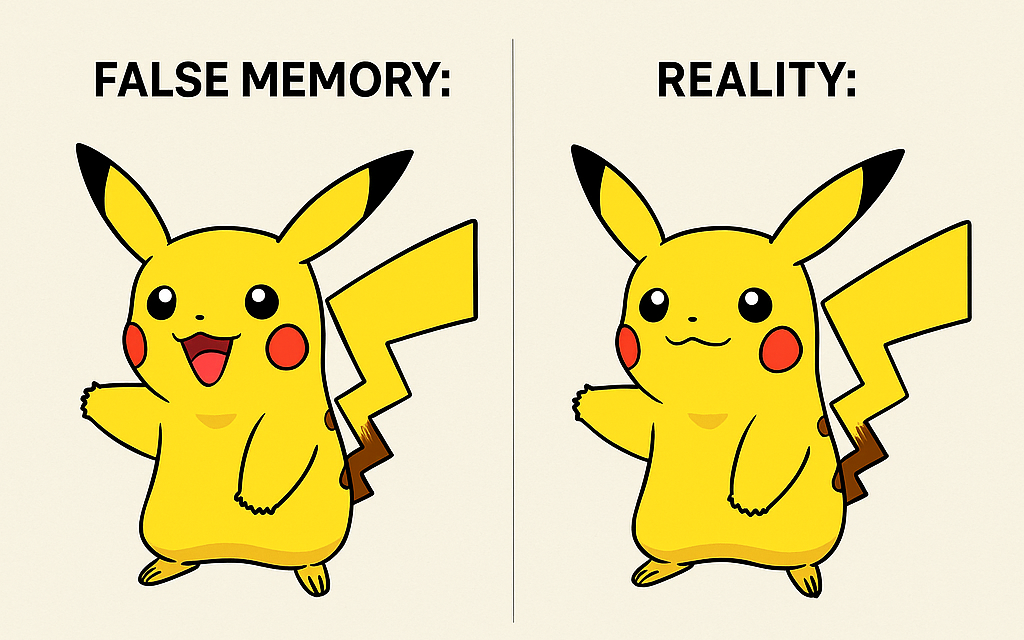
False Memory: Darth Vader says, “Luke, I am your father.”
Reality: He actually says, “No, I am your father.”
Why: People often paraphrase for clarity or drama, and the misquote spread like wildfire.
False Memory: The Evil Queen says, “Mirror, mirror on the wall…”
Reality: She actually says, “Magic mirror on the wall…”
Why: Classic repetition and parody over time changed our collective memory.
False Memory: The voice in Field of Dreams says, “If you build it, they will come.”
Reality: It says, “If you build it, he will come.”
Why: “They” feels more universal, and media references popularized the incorrect version.
False Memory: Pikachu has a black-tipped tail.
Reality: Pikachu’s tail is entirely yellow.
Why: His ears are tipped with black, possibly influencing this visual mix-up.
False Memory: Queen’s song ends with “of the world!”
Reality: That line isn’t at the end of the studio version.
Why: Live performances include it, causing memory overlap.
False Memory: C-3PO is fully gold in Star Wars.
Reality: He has one silver leg in the original trilogy.
Why: The shine often blends with lighting, going unnoticed.
False Memory: Tom Cruise dances in a button-down shirt, underwear, and sunglasses.
Reality: He wore no sunglasses in that iconic scene.
Why: Promotional images and parodies added them in.
False Memory: Hannibal Lecter greets Clarice with “Hello, Clarice.”
Reality: He actually says, “Good morning.”
Why: The incorrect quote became a pop culture catchphrase.
False Memory: Forrest Gump says, “Life is like a box of chocolates.”
Reality: He says, “Life was like a box of chocolates.”
Why: The simpler present-tense version is easier to quote.
False Memory: It’s spelled “Looney Toons.”
Reality: It’s “Looney Tunes.”
Why: “Toons” feels right because it’s a cartoon—while “Tunes” references the music.
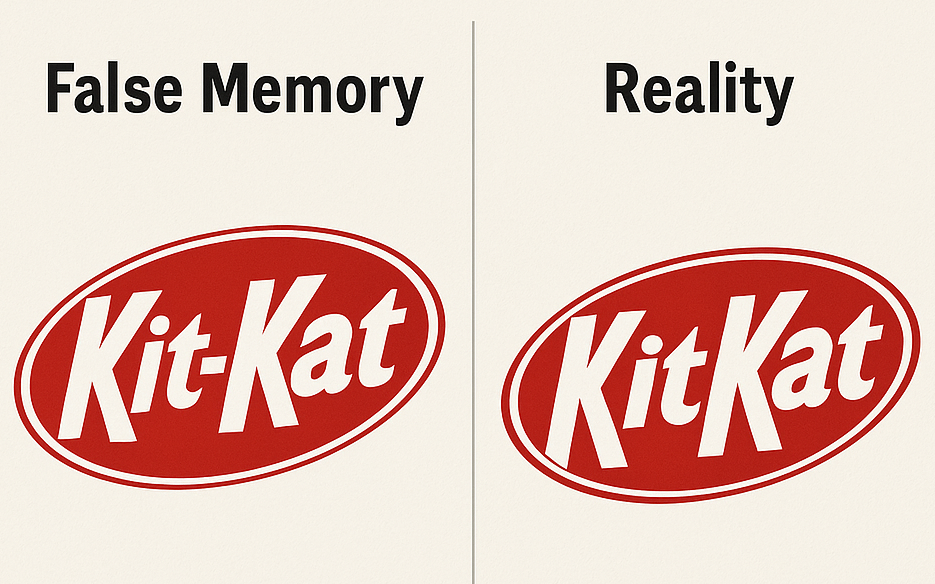
False Memory: Mr. Monopoly wears a monocle.
Reality: He doesn’t.
Why: People likely confuse him with Mr. Peanut or other monocled mascots.
False Memory: Curious George, the monkey, has a tail.
Reality: He’s tailless.
Why: Most monkeys have tails—except apes, which he is.
False Memory: The logo reads “Kit-Kat.”
Reality: It’s just “KitKat.”
Why: Hyphens are common in compound brand names.
False Memory: Their logo features a cornucopia.
Reality: It never did.
Why: The arrangement of fruit makes us imagine one behind them.
False Memory: It has two E’s, like “breeze.”
Reality: It’s “Febreze.”
Why: Our brains autocorrect to match common spelling patterns.
False Memory: It’s “Oscar Meyer.”
Reality: It’s “Oscar Mayer.”
Why: The jingle sounds like “Meyer,” tricking auditory memory.
False Memory: It’s “Sketchers.”
Reality: No T—just “Skechers.”
Why: Our brains apply standard English spelling rules.
False Memory: It’s “Double Stuff.”
Reality: It’s “Double Stuf.”
Why: Most people assume the word is spelled correctly.
False Memory: The plural is “Cheez-Itz.”
Reality: It’s “Cheez-It” (even for the box).
Why: We naturally pluralize with “-z” for stylistic fun.
False Memory: The Target logo had more red rings.
Reality: It’s always had a single red circle and dot.
Why: The simplicity feels too minimal, so people add rings in memory.
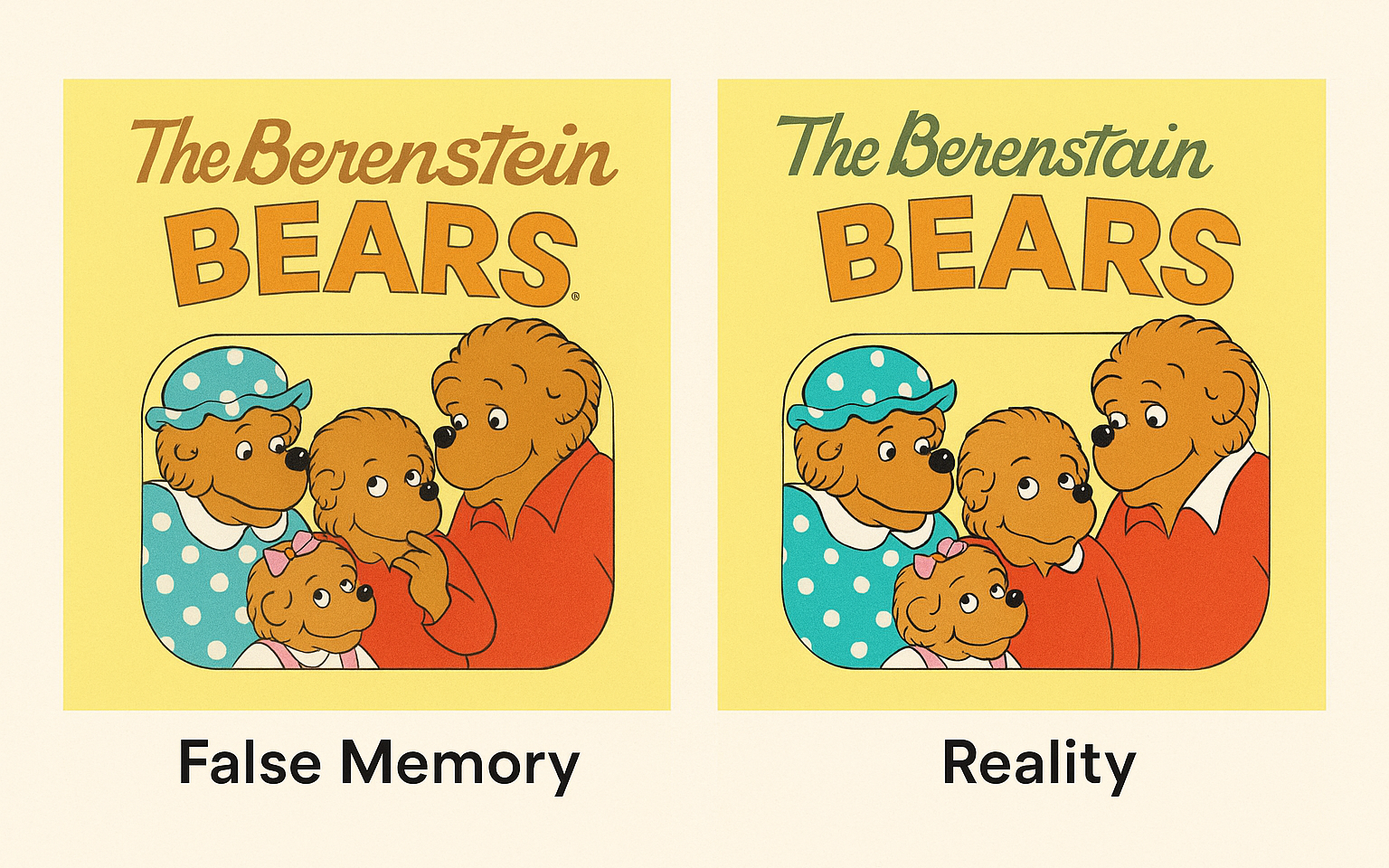
False Memory: It’s “Sex in the City.”
Reality: It’s “Sex and the City.”
Why: Spoken quickly, “and” sounds like “in.”
False Memory: The books are by the “Berenstein Bears.”
Reality: It’s “Berenstain Bears.”
Why: “-stein” is more familiar to our eyes and ears.
False Memory: The cartoon was “The Flinstones.”
Reality: It’s “The Flintstones.”
Why: The “t” sound is easy to skip over when spoken.
False Memory: The campaign started in the ‘70s.
Reality: It began in 1993.
Why: Retro aesthetics made it feel older than it is.
False Memory: That’s how Mr. Rogers sang it.
Reality: He said, “This beautiful day…”
Why: Parodies changed the lyric for simplicity.
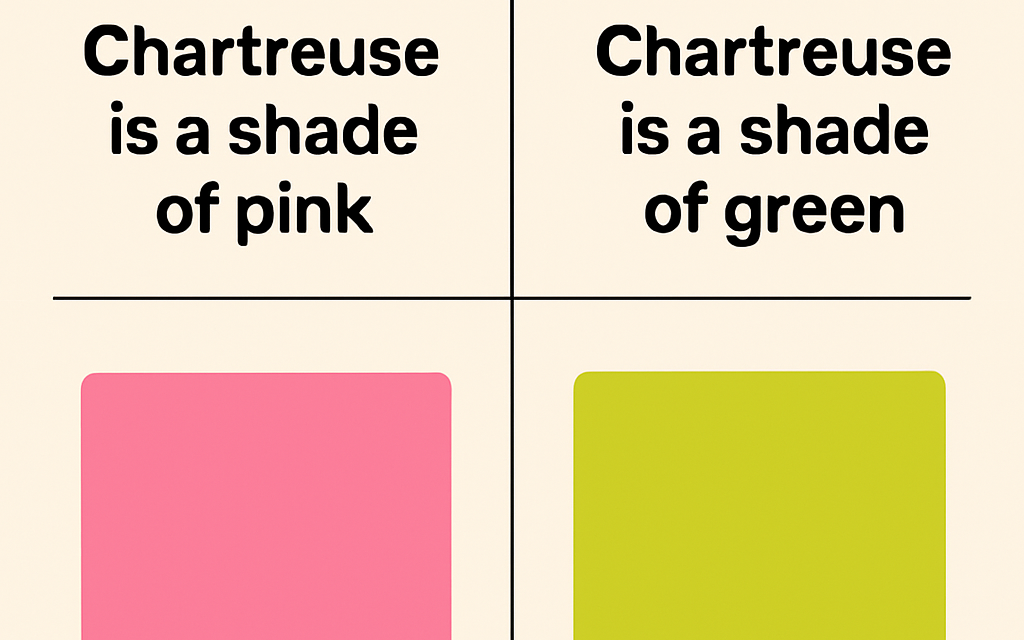
False Memory: He died in prison in the ’80s.
Reality: He passed in 2013.
Why: Possibly confused with news about his imprisonment or another political death.
False Memory: It’s northeast of Australia.
Reality: It’s southeast.
Why: Inaccurate maps and globes are common in early education.
False Memory: Famous painting shows him holding a turkey leg.
Reality: That image doesn’t exist.
Why: Possibly from cartoons and parody versions of the king.
False Memory: Some people insist there are 51 or 52 states.
Reality: There are 50.
Why: Washington D.C. and Puerto Rico are often confused as full states.
False Memory: Chartreuse is pink or reddish.
Reality: It’s a yellow-green color.
Why: The fancy name sounds like it should be warm-toned.

False Memory: Ends with “…of the world!”
Reality: That part’s earlier in the song.
Why: Live performances altered memory.
False Memory: The Beatles admitted it.
Reality: They said it was based on a child’s drawing.
Why: The acronym connection is too tempting.
False Memory: It was widely banned.
Reality: It was controversial, but not banned en masse.
Why: Rumors and religious backlash distorted reality.
False Memory: Some think it was 1970 or 1971.
Reality: July 20, 1969.
Why: The rounding up of dates or school misremembering.
False Memory: People believe she was declared a saint before her death.
Reality: She was canonized in 2016.
Why: Her status was revered long before formal sainthood.
False Memory: It’s visible from space.
Reality: Astronauts confirm it’s not easily visible with the naked eye.
Why: A myth taught in schools and trivia.
False Memory: A brand called “Jiffy” existed.
Reality: It’s always been “Jif.”
Why: Confused with “Skippy” or “Jiffy Pop.”
False Memory: He’s holding his chin.
Reality: His hand is on his forehead.
Why: Replicas and re-enactments usually show the chin version.
False Memory: “That’s one small step for man…”
Reality: He said, “That’s one small step for a man…”
Why: The “a” was hard to hear in the transmission.
False Memory: Prince kisses her and she wakes.
Reality: That happens in Sleeping Beauty; in Snow White, it’s more of a stretch.
Why: Disney moments blend together in memory.
False Memory: It’s “Theresa.”
Reality: It’s “Teresa.”
Why: Common English spelling creates a false correction.
False Memory: A ‘90s movie called Shazaam starred Sinbad.
Reality: It never existed.
Why: Confused with Kazaam starring Shaquille O’Neal.
False Memory: It’s a direct democracy.
Reality: It’s a constitutional republic.
Why: The term “democracy” is used broadly in media and education.
False Memory: They both stepped out simultaneously.
Reality: Only Neil stepped out first.
Why: Iconic images show them together, leading to assumptions.
False Memory: He always wore a red sweater.
Reality: He wore sweaters of many colors, including green and blue.
Why: The red one became most iconic through repeated media images.
So next time you’re absolutely sure you remember something a certain way—pause and ask yourself: is it real, or just another twist in the Mandela Effect?